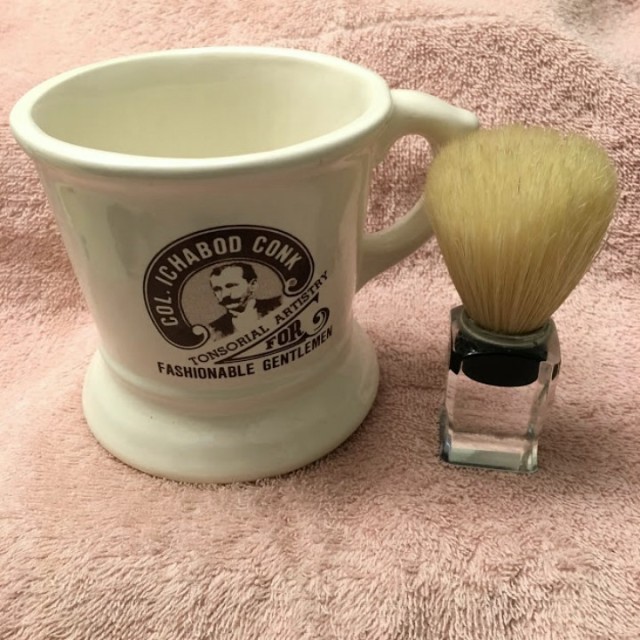
My fascination with shaving has a lengthy history that began when I was a small boy and became aware of this ritual performed by grown-up men. For as long as I knew him, my grandfather shaved with a safety razor, a mug of shaving soap, and a brush. He also had an old straight razor in his basement bathroom and although I never saw him use it, I’m sure he had done so once upon a time. I rarely got to watch Grandpa shave, but the few memories I have of those times involved him coming out of his bathroom with one or two fragments of tissue stuck to his face. I would later learn firsthand that this was a tried-and-true method for catching and holding blood droplets from the seemingly inevitable razor nicks and cuts.
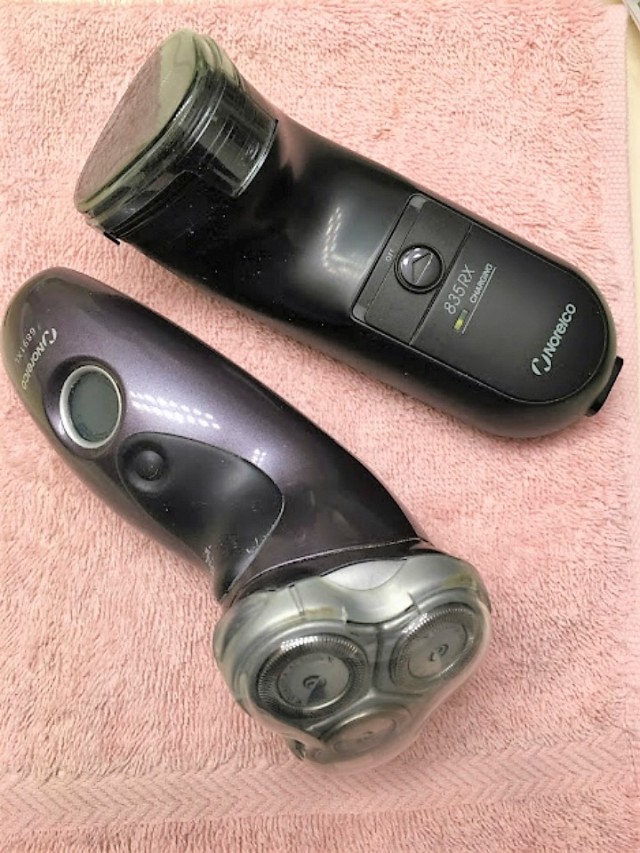
My dad’s arsenal was a bit more modern. He was a Norelco man, having owned numerous corded and uncorded models over the decades. But he also had several safety razors, at least one in each bathroom, and he used them on occasions when he wanted a particularly close shave. Pop professed that he could go for two days between proper wet blade shaves, whereas his electric razor required daily use.
My dad was no stranger to the toilet paper trick, either, but he also kept a solid alum block, which he had purchased from a barber, I couldn’t tell you in what year. After shaving, you simply run the alum block under cool water and then gently glide it over your freshly-shaven skin. Any nicks, cuts or abrasions will immediately be made known. The alum stings like mad when it finds any such wound, but it does help check the flow of blood. Styptic pencils, used for the same purpose, also contain powdered alum crystals. After my dad passed away, I kept that old alum block, mainly for sentimental reasons, though I have used it from time to time. I wish I’d kept all of the razors as well. Hindsight is always 20/20.
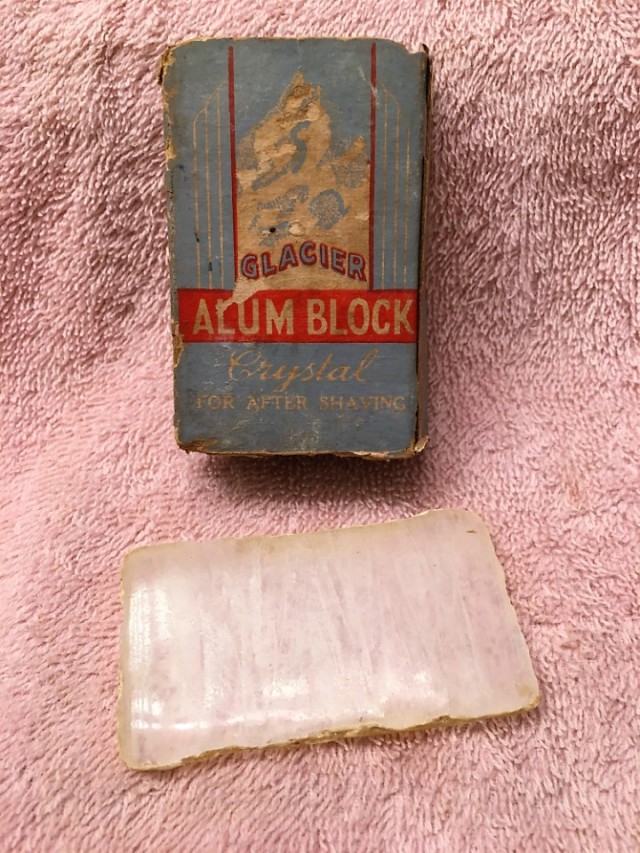
When the time came for me to begin shaving, sometime during my high school years, my dad introduced me to shaving by presenting me with one of his safety razors. This particular one had a “butterfly” mechanism for replacing the double-edged blade and was also adjustable. Twisting a dial built into in the handle would change the height/exposure of the blade, allowing for a milder or more aggressive shave, depending on the setting. This was a good choice for a newbie like me.
We went over the basic techniques—using hot water and the shaving brush to work up a good lather and apply it to my face, holding the razor properly, rinsing thoroughly, using the alum block if necessary, and applying aftershave. My young peachfuzz whiskers never stood a chance. Neither did my face when I began experimenting with more aggressive razor settings over time. But I learned and I did okay.
Before long I became curious about electric shavers and got one of my own. Using an electric razor was cool because I could mow down my whiskers relatively quickly without fear of cutting myself. But they were also bothersome because (a) applying pressure to get a closer shave often resulted in razor burn and (b) the darned things needed to be cleaned regularly. Over the decades that followed, I tried various electric models from Norelco, Remington, Braun, and Panasonic. Some I liked better than others—especially the self-cleaning models, although those tended to break down after the warranty period was up.
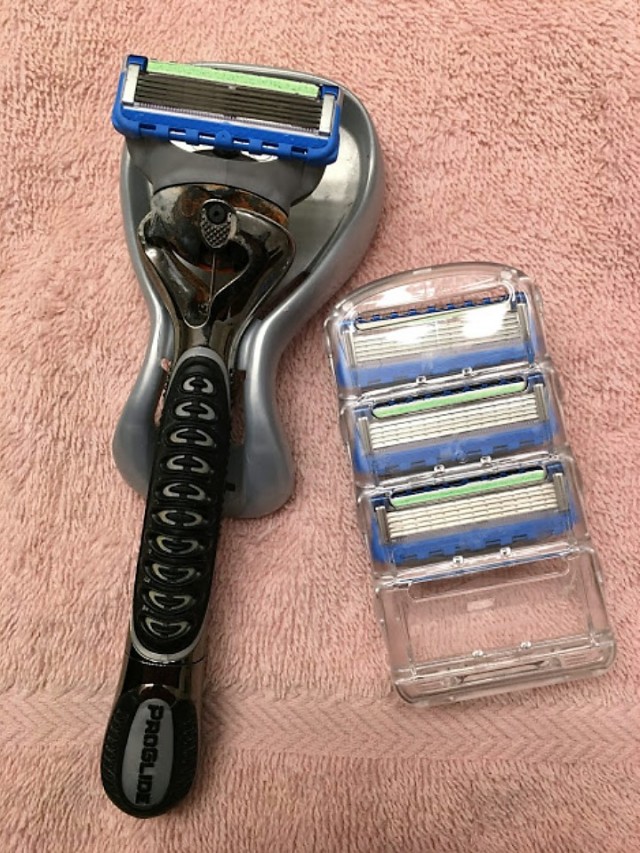
I also went through all the iterations of disposable and multi-blade cartridge razors, beginning with the Gillette Trac II and culminating with the Gillette Fusion5™ ProGlide Power razor. In the end, I preferred wet shaving, though not necessarily the rising costs associated with using the latest innovations in cartridge shaving technology. Every time the folks at Gillette (now part of Proctor & Gamble) rolled out another iteration of the latest must-have razor, I knew I could count on the cost of replacement blade cartridges going up.
I’d been seeing and hearing a lot about the resurgence of safety razors over the past few years and I guess it was just a matter of time before I got swept up in the movement myself. The cost of blade replacement for my five-bladed (six if you count the trimmer blade on the backside), self-lubricated, vibrating, flexing, pivoting shaving system was between two and three dollars per replacement cartridge and as much as I liked the product, I was ready for a change, if only to save a few bucks. As a rule, I am seldom afraid to try something new. But was I ready to try something old?
After a bit of research, I decided to buy The Chieftain safety razor by Vikings Blade. an outfit in Australia that seems to have fun with what they do while taking the art of shaving quite seriously. The product is well-rated and comes with a storage/carrying case as well as five starter blades, all for a price that wouldn’t break me (I was still employed full-time and hadn’t yet broken my shoulder when I bought this). When my new razor arrived, I was not disappointed. The weight and balance are excellent, to say nothing of the fit and finish. The Chieftain is a quality product. I couldn’t wait to try it out.
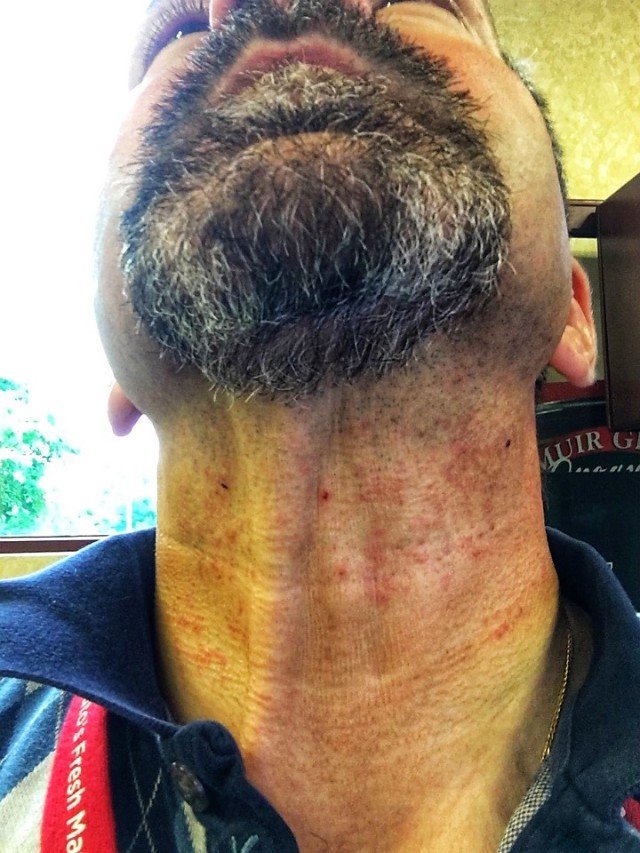
Unfortunately, despite having read and reread the directions and even watched a video or two about shaving with a safety razor, I had built up some bad habits from many years of having shaved with pivoting disposable cartridge razors. Despite the “mild” blade I had used, my poor neck paid dearly for those bad habits. It was days before I attempted shaving with that razor again, but to be very clear, it wasn’t the razor’s fault. This was pure user error.
I recall one of my college marketing professors, years ago, explaining that The Gillette Company had developed the pivoting razor head after research revealed that a substantial portion of shavers did not hold their razor at the proper angle. The advertisements never said, “…with a new pivoting head, because some of you are too stupid to hold your razors properly,” but that was the gist of it. And remembering that helped me get the best shave of my life with a safety razor. That and an email.
I emailed “Grumpy old Robert” Vue, owner of Vikings Blade, who merely confirmed what I already knew. “Michael, neck shaving with a safety razor is very very different and I can totally guess why you had to use the alum bloc.” He proceeded to give me some sound advice about shaving with a safety razor, which I took to heart. And so, with a healed up neck and a head full of knowledge, I picked up my safety razor and began anew. I even learned a few new things along the way.
If you are looking to make the switch to a safety razor, here are some important tips to keep in mind.
- Hydration matters. Your skin needs to be very wet, your whiskers softened by it. The result will be an easier shave and more optimal results.
- Use a proper shaving cream/gel that works for you. I’ll get into my favorite in a bit.
- A safety razor will not pivot to correct your shave angle, nor will it forgive your mistakes. You must control the blade angle throughout the shave. A 30° angle is considered optimal and you won’t need a protractor to find it. When the portion of the razor head above the blade and the safety bar/comb beneath the blade are both touching your skin, you’re pretty much there.
- Do not apply pressure on your safety razor for a closer shave! Use the natural weight of the razor and let it glide, at the proper angle, to do its job. Major thanks to Grumpy old Robert for driving this point home for me.
- Lift the razor off your skin before changing the direction of a stroke or moving the blade sideways.
- Shaving “with the grain” (in the same direction as your whiskers grow) will yield the mildest shave. Sideways to the grain is more aggressive. Against the grain is most aggressive and will yield the closest shave, if you have the skill and your skin can handle it.
- Understand your face. There are about three points on the contours of my neck that require additional attention in order to get a close shave without injury. The same goes for the area above my mustache and beneath my nose. Your mileage may vary.
- Take your time and do it right. If you rush, you may regret it.
- Sometimes it makes more sense to shave less aggressively, i.e. on a very hot and humid day.
- No matter what, your last razor strokes should be downward. I was taught that this would train the whiskers to grow downward. True or not, I can’t shake that teaching.
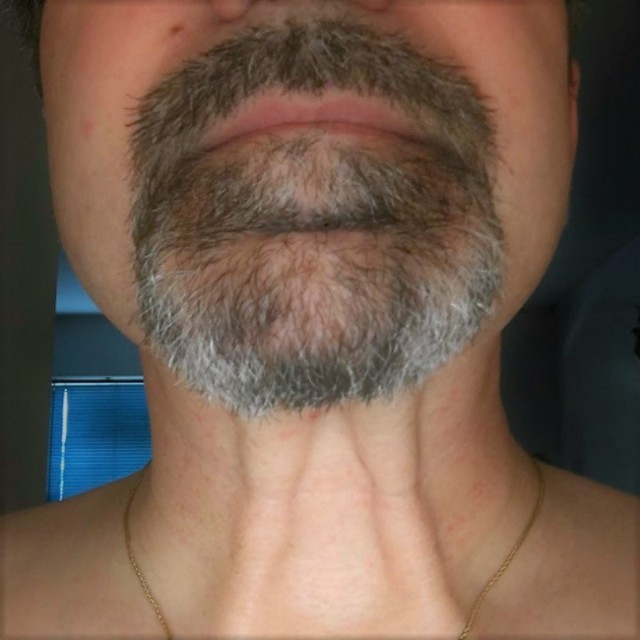
My results have been phenomenal. Never again have I suffered the same “hamburger neck” that I experienced with that first, careless shave. I have graduated to using a more aggressive blade—more on that in a moment—and my usual result is an unbelievably close, smooth shave. Any actual nicks have been few and far between, and are usually the result of my zeal to repeatedly achieve the closest possible shave.
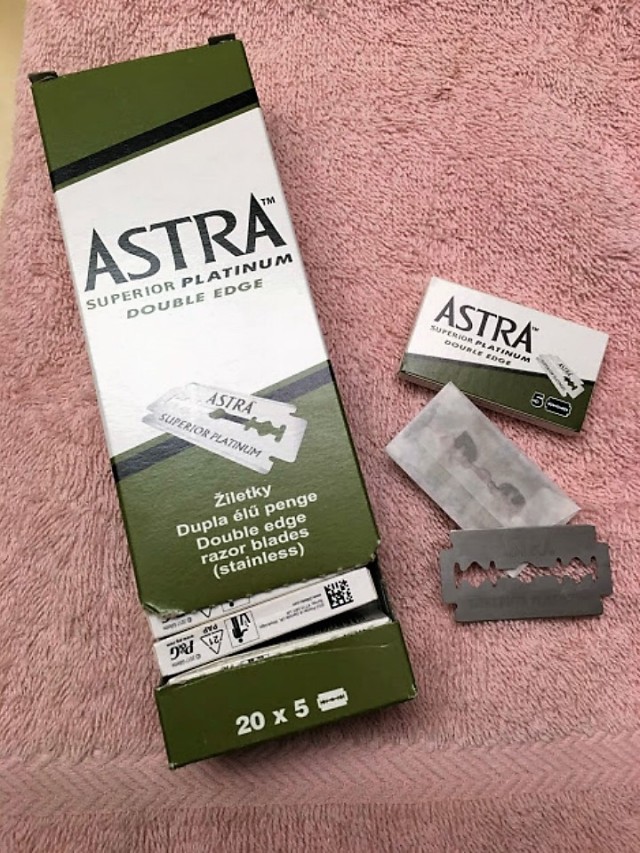
I place a lot of emphasis on technique when it comes to shaving with a safety razor, but I would be remiss not to mention two other factors, that being your choice of double-edge (DE) razor blade and shave cream—each of which can be a very personal thing. On that fateful first day, when I turned my neck into so much hamburger, I couldn’t see using anything sharper than the “starter” blades that had come with my razor. Several weeks later, I had changed my mind. The Astra Superior Platinum Double Edge Safety Razor Blade is reputed to be among the sharpest-yet-smoothest blades available. These stainless steel, platinum-coated blades are super thin and even after “dulled” by a week or more of shaving, they should be handled with respect. I can get a full two weeks out of one blade, but one week is optimal and at just under ten cents a blade, when bought in 100-count packages, I have little reason to push it. That’s right, I buy 100 premium quality DE razor blades for a fraction of what I used to pay for four disposable Fusion 5 Power replacement cartridges. Some people periodically flip the blade over in the razor head, claiming that doing so extends blade life. Me, I flip the blade after every shave. Even if doing so doesn’t help, it can’t hurt.
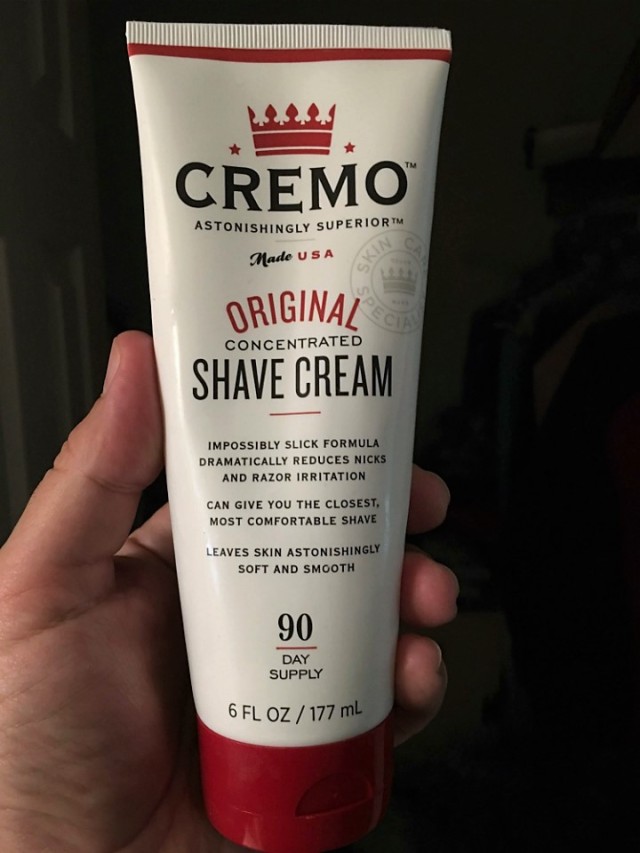
Cremo Original Concentrated Shave Cream is my go-to shaving product. I’ve tried others and kept returning to this one. Again, this is a very personal choice, so I encourage shavers to draw their own conclusions. For me, a dime-size dollop plus hot water gets my face as slick as heck and pretty much keeps it that way throughout the shaving process, as long as I can keep it moving with one wet hand. A sufficient coating of Cremo is nearly transparent on my face, which allows me to see what I’m doing and shave with precision.
My son looked at the results I have achieved with a double-edged safety razor and decided to draw his own conclusions. Less than a week later, he opted to get his own Vikings Blade razor, opting for The Chieftain, Odin Edition. I have yet to hear a complaint.
In the end, one’s shaving equipment and accessories are a personal choice. For now, I am very pleased with the choices I’ve made.